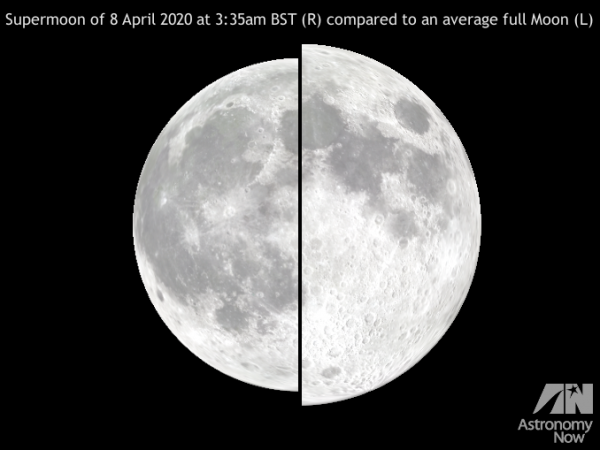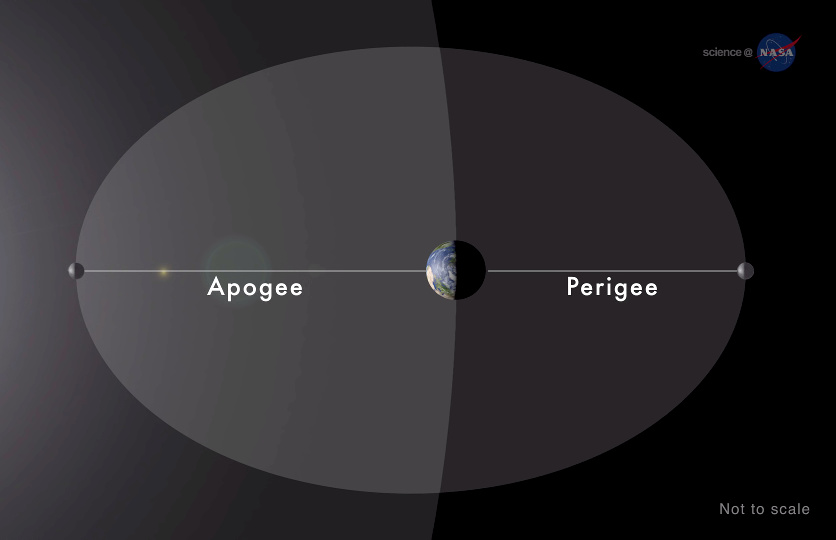Don’t miss the largest supermoon of 2020 on 8 April – Astronomy Now Online

Observers in the British Isles with clear skies shortly after 7pm BST should look due east to greet the rising Moon which is almost full against the stars of Virgo. But look a little closer: does it seem a bit larger than normal? Even allowing for the subjective effects of the Moon illusion, your eyes are not deceiving you — this really is a big Moon, the largest it’ll appear throughout 2020!

Purely by coincidence, moonrise for the UK on Tuesday, 7 April 2020 (6:55pm London, 7:09pm Edinburgh, all times BST) occurs within a few minutes of the year’s closest perigee (the Moon’s closest point to Earth in its oval-shaped orbit). At 7:07pm on 7 April, the distance between centres of the Moon and Earth is just 356,910 kilometres, some 7.2 percent closer than average.
The lunar perigee of 7 April 2020 isn’t just the closest Moon of the year, it’s the closest that our natural satellite gets to Earth until 10am UT on 4 December 2021 when the centre-to-centre distance between the two bodies is 356,795 kilometres. How close can the Moon get? A 356,447-kilometre perigee occurs on 6 December 2052, the closest of the century.
If you’re awake around 3:35am BST on Wednesday, 8 April 2020, take a look to the southwest where you can see the lunar orb appear fully illuminated, some 8 degrees (or a little less than the span of a fist at arm’s length) to the upper right of first-magnitude Spica, Virgo’s brightest star. Occurring just 8½ hours after perigee means that this full Moon is also a supermoon and – yes, you’ve guessed it – the largest of 2020. In fact, we won’t see a larger supermoon until 5 November 2025.





